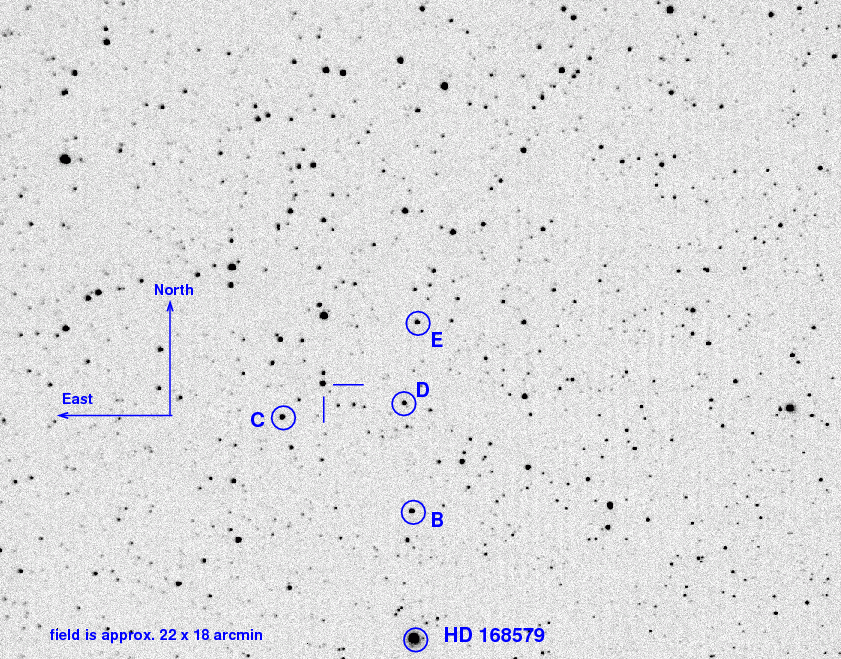
On the night of Apr 30/May 01, 2018, in the wee hours of the morning, I acquired a set of observations of the likely black-hole system MAXIJ1820+070, (also known as ASASSN-18ey ). Conditions were fair: the sky was clear, but a very bright full moon lit up the sky.
I'm still working on the vertical stripes ... I did take a set of 1x1-binned frames to send to Atik.
The main setup was:
Notes from the night:
Recovering from "emergency" power off: Even after I set the time properly later, the telescope slewed wildly when I asked it to go to Arcturus. So, I manually centered Arcturus and sync'd. Fine. I was able to move to my field and acquire images. So far, so good. But when I told the telescope to "park" at end of night, it again started to slew wildly to the west. To abort, I had to turn off power -- pressing the middle button on controller did not stop it.
So, after re-starting, the telescope said it needed to be aligned. I performed a "pseudo-alignment" to placate it:
I then moved the telescope to a vertical position, re-set the Park Position, and parked it. I hope this means that it will know roughly where it is pointing on my next observing session.
This optical and X-ray and radio transient is likely a black hole accreting material at a higher-than-usual rate. It has been the subject of many observers over the past two weeks -- see the trail of telegrams that include
The object is located at
RA = 18:20:21.9 Dec = +07:11:07.3
A chart of the field is shown below. The size of the chart is about 22 by 18 arcminutes.
I've marked the location of several comparison stars, which also appear in light curves below. Stars C, D, and E are mentioned by the Tomoe Gozen team in ATel 11426, but all three are rather red, with (B-V) ranging from 1.14 to 1.37. Star B is one of the bluest nearby bright stars, with (B-V) = 0.52.
star UCAC4 B V ---------------------------------------------------- B 486-079513 12.975 12.454 C 486-079608 13.968 12.830 D 486-079523 14.637 13.272 E 487-077858 14.637 13.272 ----------------------------------------------------
The dark current was ordinary.

The sky value shows no clouds, a bright background when target low in the East.

Here's a record of the telescope's drift. Guiding was turned off, and the telescope drifted quite a bit.
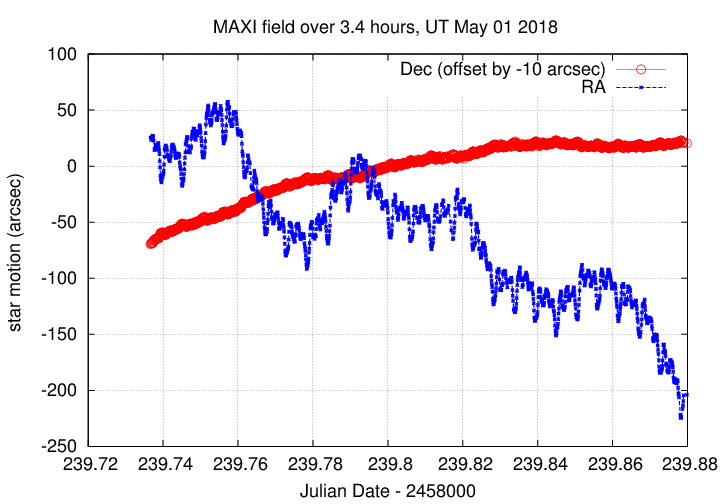
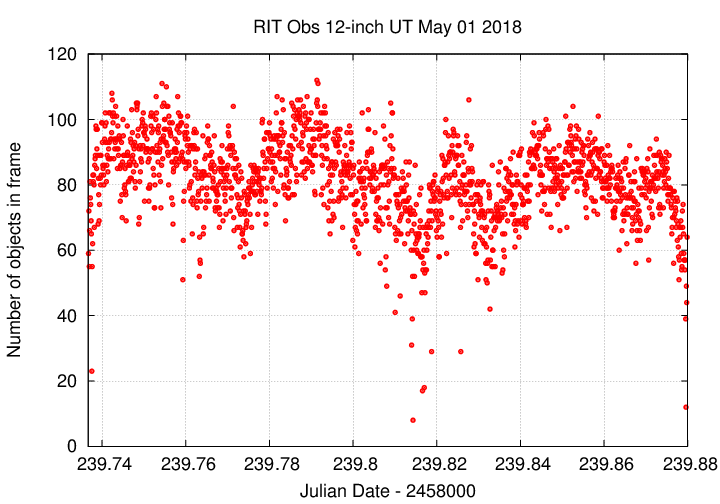
I used an aperture with radius 3.0 pixels, as usual.

Image adjustment factor shows only small variations -- another sign of clear skies.
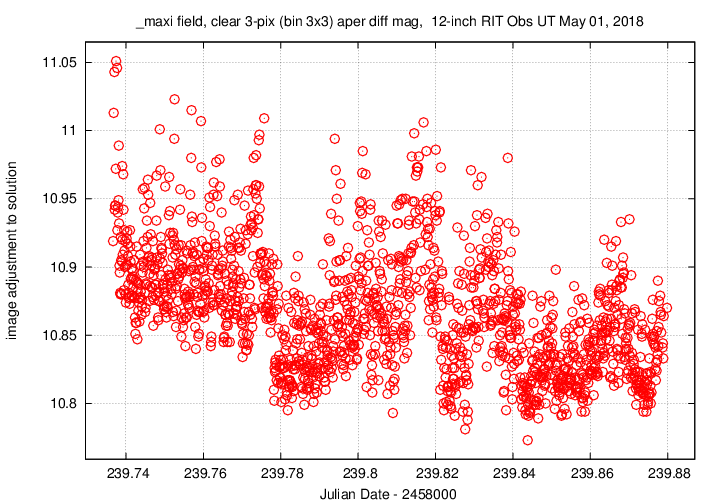
Using aperture photometry with a radius of 3 pixels (binned 3x3, each pixel is 1.98 arcsec, so a radius of 5.9 arcsec), I measured the instrumental magnitudes of a number of reference stars and the target. Following the procedures outlined by Kent Honeycutt's article on inhomogeneous ensemble photometry, I used all stars available in each image to define a reference frame, and measured each star against this frame.
Sigma-vs-mag plots show that the floor was about 0.010 mag overall. The outlier around instrumental magnitude 4 is MAXI J1820+070.
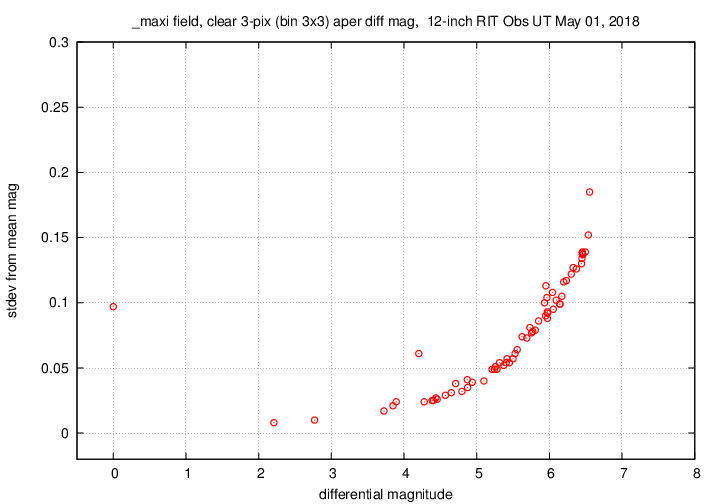
Here are light curves of the variable and the field stars.
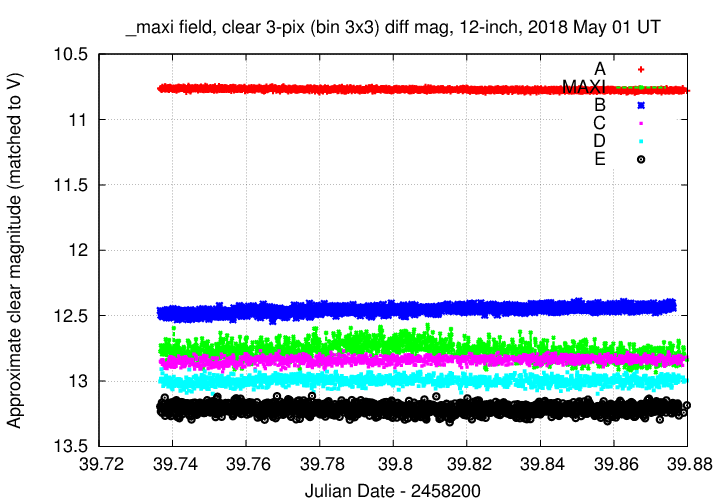
I used the UCAC value for the V-band magnitude of star "B" = UCAC4 486-079513 to shift the ensemble magnitudes to the standard V-band scale -- but remember that these are UNFILTERED measurements.
Here's a closeup on the variable. I'll connect the dots to make its behavior a bit easier to see. Looks like it faded in second half of the run.
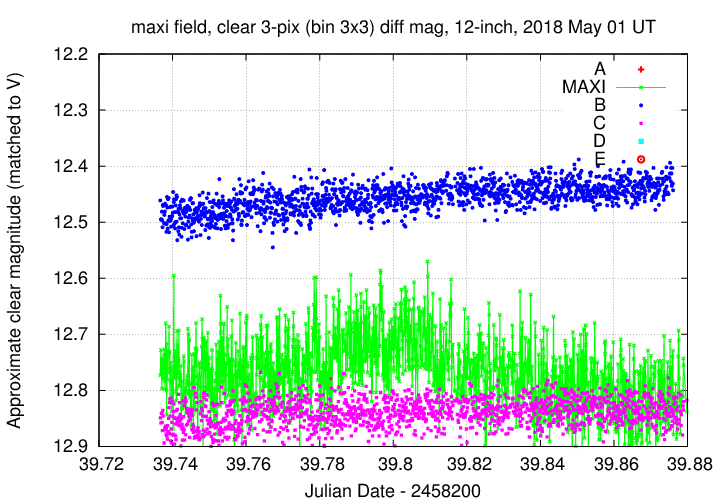
A very short section of the light curve shows some of the variations more clearly.
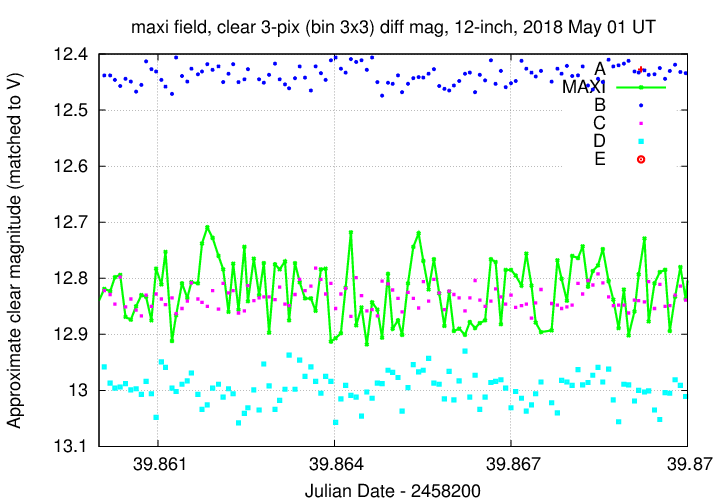
You can download my measurements below. A copy of the header of the file is shown to explain the format.
# Measurements of MAXIJ1820+070 made at RIT Obs, UT 2018 May 1, # in fair conditions (bright Moon), # by Michael Richmond, # using Meade 12-inch LX200 and ATIK 11000. # Exposures 5 seconds long, no filter. # Tabulated times are midexposure (FITS header time - half exposure length) # and accurate only to +/- 1 second (??). # 'mag' is a differential magnitude based on ensemble photometry # using a circular aperture of radius 3 pix = 5.9 arcseconds. # which has been shifted so UCAC4 486-079513 has mag=12.454 # which is its V-band magnitude according to UCAC4. # # UT_day JD HJD mag uncert May01.23667 2458239.73667 2458239.73952 12.773 0.026 May01.23683 2458239.73683 2458239.73968 12.728 0.025 May01.23700 2458239.73700 2458239.73985 12.764 0.026
Last modified 4/30/2018 by MWR.